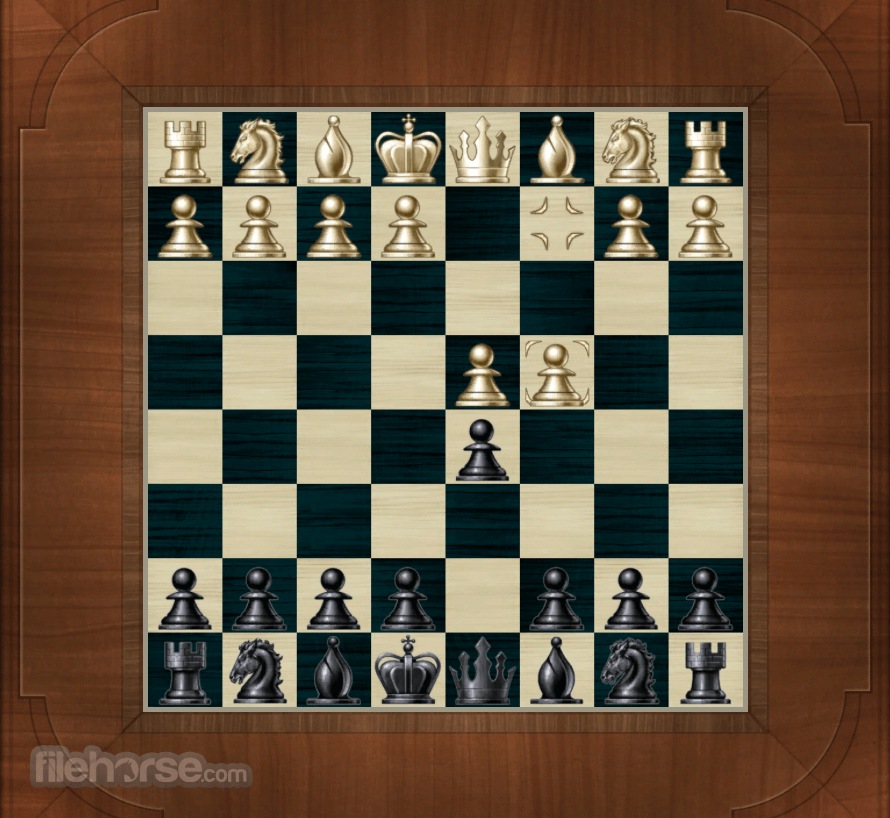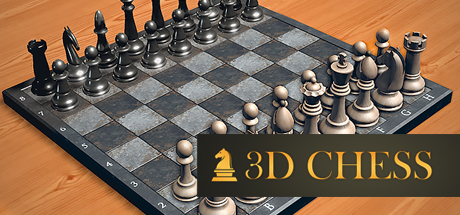- Multidimensional Chess Mac Os Catalina
- Multidimensional Chess Mac Os Download
- Multidimensional Chess Mac Os 7
ChessDB is a free chess database which can be used on Microsoft Windows, Linux, Apple Macs running OS X, FreeBSD, as well as most if not all modern UNIX versions. The program has translations into English, Spanish, Czech, Dutch, French, German, Hungarian, Italian, Norwegian, Polish, Portuguese, Russian, Serbian and Swedish. 3) Visualizing Chess Moves From Notation. 4) Training Mode. 5) Flip board and change chess board color and chess piece. 6) Paste Move History string into the textview, then visualizes moves, and save the string. 7) Create and save your own chess PGN files. 8) Support edit chess position for middle or ending game when you play on the board.
(This is a short story/guide on the best way to install ChessBase on a Mac, including Macs without a DVD drive.)
Recently, I decided to embrace my inner hipster and get a Mac. (If you don't know what a hipster is, this handy flowchart from the youreahipster tumblr might help:
Multidimensional Chess Mac Os Catalina
If you don't know what a hipster is, but you've seen American Psycho, check out:
If you don't know what a Mac is, then the rest of this post isn't going to be much fun for you.)
My new MacBook is smart, sleek and sexy. I've named her Adelaide. 12 years ago, after 'a series of unfortunate events', I started naming my computers after Australian cities. That's another story, but I accept your judgement in advance.
However, there was just one tiny problem with my new toy, and it's exactly the same reason as to why you won't see any macs floating around at top-level chess tournaments, and the same reason why not one of my GM friends takes a mac to tournaments:
Multidimensional Chess Mac Os Download

Macs don't run ChessBase.
Well, technically that's not true. A Mac is hardware, but the operating software that comes with a Mac - in my case, the imaginatively named 'OS X Mavericks' - can't handle ChessBase. Or, more accurately, ChessBase doesn't produce an OS X compatible version.

Macs don't run ChessBase.
Well, technically that's not true. A Mac is hardware, but the operating software that comes with a Mac - in my case, the imaginatively named 'OS X Mavericks' - can't handle ChessBase. Or, more accurately, ChessBase doesn't produce an OS X compatible version.
(Notice that in what follows, I will continue to use impressive-sounding computergeek terminology in order to appear like I know what I'm talking about. Of course, in reality, I really don't know very much about computers - besides which cities make appropriate names..)
You might well ask why ChessBase doesn't make a Mac-friendly version. It's a good question. Actually, ChessBase did make a Mac OS version a while ago, but apparently it didn't sell very well, so they canned it. Part of the reason could be that Macs weren't as popular a decade ago as they are now in our hipster-flourishing era. Or part of the reason could be, as was recounted to me, that the Mac Chessbase software was 'perhaps the worst-ever commercial Mac software ever created.' In any case, it doesn't exist for sale anymore, and ChessBase staff told me last year that they have no plans to introduce a Mac-friendly version any time in the near future.
Well, that's an issue. There are other ChessBase alternatives that work on Macs, such as Shane's Chess Information Database (SCID) and Mac Chess Explorer. For the casual player, these are quite sufficient. For a tournament player who is constantly using chess programs for on-the-go preparation, opening analysis and integrating other ChessBase products, this isn't really an option. This is a real shame, because ChessBase as a program is objectively really terrible: it's buggy, barely developed between versions, and gives the user neither decent control nor innovation. However, there's simply no alternative out there for the serious player.
My next attempt to install ChessBase was to investigate running a virtual copy of Windows. This is basically the equivalent of running Windows from within Mac OS X. The main programs you can get are Parallels, VMware and VirtualBox (the last one is free). There are two main disadvantages of this method. The first is the cost: You'll need to spend 50 euros or so on the virtual-machine software (unless you get VirtualBox), as well as buy yourself a copy of Windows to install. Well, so be it.
The second disadvantage, however, is the loss of processing power. Particularly if you're going to do some heavy engine work, your computer isn't going to be very happy with running two operating systems as well as blasting Houdini on full speed. Think of it like wearing a dinner jacket over the top of an old coat: Sure, it still looks pretty much the same, but things are going to get hot and tiresome if you do too much work. For the serious analyst, this is super annoying.
My next attempt was to check out Wine, which is a 'compatability layer'. To be honest, I don't know what that means. From what I can tell, however, it tries to take all the little itty-bitty Windows code in a program and translate it into something Mac-friendly. The result is that MOST features of MOST Windows programs will work on OS- mostly. Think of it like disguising your old coat to look like a dinner jacket: it'll get you in to most things, and you won't be hampered much, but there are going to be one or two functions you'd like that'll reject you.
It's free software that relies heavily on its user community, so as you can imagine, the most popular programs are the ones which get most of the work. ChessBase, unfortunately, isn't one of them. Apparently, at least according to their program directory, older versions of ChessBase (such as CB9) worked 'reasonably well', so I thought I'd take my chances with my ChessBase 12, the latest version. I have to say, it's not very easy to get the thing to run. It was originally designed for Linux people, who I associate with being far more computer-savvy than myself. After bumbling around for a couple of hours, I eventually got to the final stage of 'running' my ChessBase through Wine on my Mac. Unfortunately, it was a no-go. To be fair, the Wine site says that this is a risk for untested programs, and it also might just be that I'm not sophisticated enough to get it to work. But if you too think of yourself as a point-and-click sort of user, take my advice: this isn't the way to go.
(Intermission: If you think it's hard being a hipster, you wouldn't believe the stuff Australians have to deal with..)
Finally, I was down to my last attempt: Boot Camp. This is Apple's integrated software to run a full version of the Windows operating system on your machine. Basically, when you turn on the Mac, you get to choose whether to run OS X or Windows, so there's no loss of CPU power in ChessBase (you do have to allocate some of your harddrive space to a second operating system, of course). The problem for me was that my MacBook doesn't have an optical (DVD) drive, so I couldn't install a Windows disk, even if I had one (which I don't).
Multidimensional Chess Mac Os 7
Fortunately, a while ago Microsoft commissioned a company called Digital River to provide .iso downloads for all their Windows 7 versions. You can find the downloads here (and yes, this is totally free and legal). Basically, Microsoft wants you to be able to download and install Windows 'for free', because Windows only works for 30 days without an activation key - which you have to buy from Microsoft, of course.
Once you have the Windows 7 .iso file, the Boot Camp instructions are incredibly simple to use; you can google them for yourself, if you have any troubles, and there are plenty of websites offering advice. Next, boot your computer holding down the 'Option' key and choose to boot to Windows. Then, install ChessBase. Obviously, make sure you have a downloadable version if you don't have a DVD drive. If you're using an .iso file, you'll have to install VirtualClone (free!) to mount it: http://static.slysoft.com/SetupVirtualCloneDrive.exe
One final problem: If you don't already own Windows 7 (and thus an activation key) you might be wondering what to do to keep your Windows copy going after the 30-day trial. Believe it or not, it's actually really difficult to legally buy a licence from the Microsoft website. Your best bet is actually to go to any computer store and buy a brand new copy of your Windows 7 version (make sure you get the same one; don't buy Windows 7 Home if you downloaded and installed Windows 7 Professional!). You won't need the disk, of course, but just the code on the back. Then you can manually activate it like this: http://www.wikihow.com/Activate-Windows-7
Note that Microsoft DOES NOT sell individual activation codes. If you google around, you'll find plenty of sites willing to sell them to you; these are most likely illegal (although, apparently, most likely safe as well). There are also different sneaky ways of disabling Microsoft's ability to check after 30 days whether you've got a legal copy or not, including how-to videos on YouTube by 12 year old kids (seriously, kids, what are you doing?!). It doesn't matter about the method; after 30 days, if you're running Windows and you haven't bought an official copy, technically you're doing something illegal.I wash my hands of thee.
Anyway, finally, you'll end up with a full-power version of ChessBase on your Mac, and of course, now you have the ability to install any other Windows-only programs you might have as well. You can be both a chessplay AND a hipster! The song of the fae mac os. Hurray!
(You made it this far? Well done. Here's your reward: The Bondi Hipsters. Steer clear if you're easily offended.)

